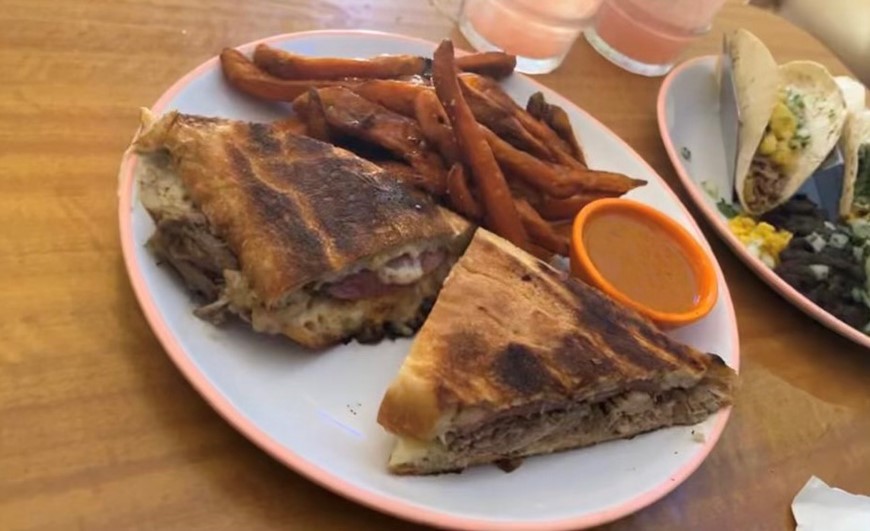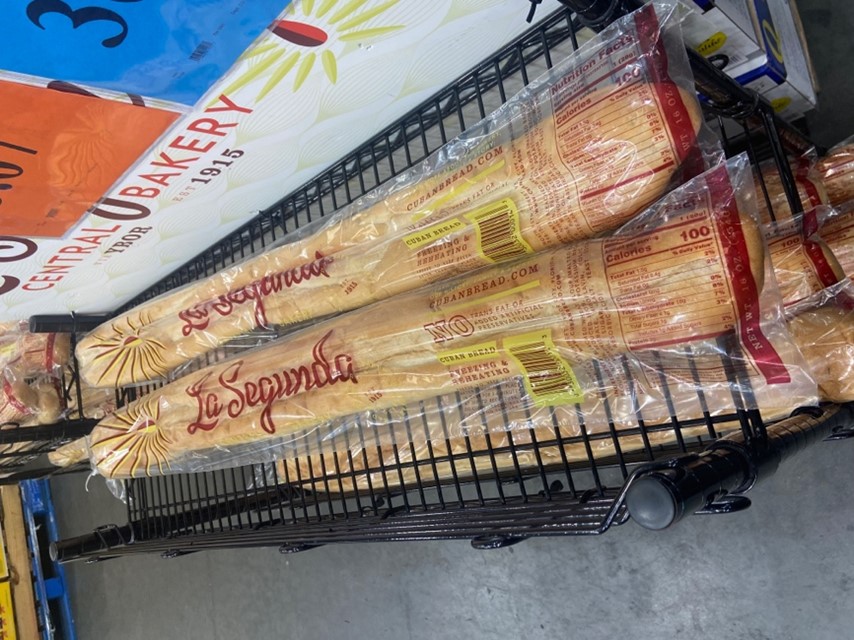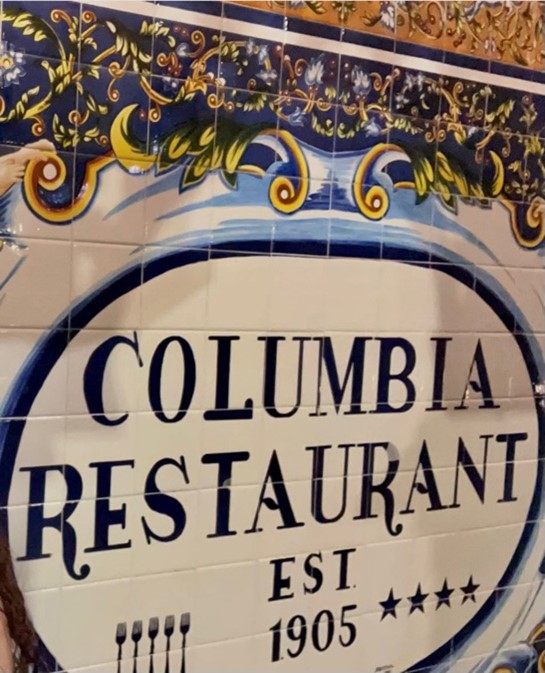By Makaila Mekdeci Community & Culture Beat Reporter
YBOR CITY, Fla. — In Ybor City, the vibrant Cuban culture is best experienced through its hearty cuisine.
Home to the highly regarded and over-a-century-old Columbia Restaurant and famous La Segunda bakery, and the birthplace of the famous Tampa Cuban sandwich, the culinary story of the city is one of the richest in all of Florida.
The Tampa Cuban sandwich is more than a delicious meal – it’s a symbol of Ybor City’s history. At its core, the sandwich embodies affordability, flavor and practicality.
For the cigar workers in Ybor City a century ago, it served as an ideal lunch – a satisfying, filling, and easily portable meal that kept them going during long workdays. The sandwich, previously coined as the “mixto,” was designed to give them a taste of home and sustenance in a single, affordable package.
“The Cuban sandwich represents the migration of people from Cuba as well as the melting pot of people who lived and worked among each other when they came to Tampa’s Ybor City to make a new life,” said Jeff Houck, Columbia Restaurant’s vice president of marketing.
With culinary pioneers like Columbia Restaurant and La Segunda Bakery, this culturally profound yet simple meal has evolved into an integral part of West Tampa’s cuisine.
“You can definitely find some great Cuban sandwiches,” said Ahjalia Garcia, whose family has lived in Ybor City for nearly a decade. “Almost anywhere in West Tampa is going to be the best bet. They are definitely significant to the city.”

The formation of the “original” Tampa Cuban, of course, starts with delicious pressed Cuban bread – soft on the inside with a crisp and flaky exterior. Inside this mustard-slabbed bread is a combination of salty ham, tender sliced roast pork, salami, Swiss cheese and tart pickles. Typically cut on the diagonal and perhaps too large to finish at one time for many, this sandwich has found its home on an increasing number of menus in the area.
At Columbia Restaurant in Ybor City, the oldest restaurant in Florida and the largest Spanish restaurant in the world, it is one of the most popular dishes.
Named the best sandwich in Florida by Food and Wine, it is crafted the traditional Tampa way and served often with a side of crisp plantain chips and a pickle spear. Houck was also able to offer great insight as to what makes the sandwich at Columbia Restaurant stand out from others of its kind.
“The sandwich continues to receive accolades for many reasons, not the least of which because many of the ingredients are prepared in-house,” Houck said, “Including the mojo-marinated roast pork and the Spanish-style baked ham. Importing Genoa salami with black peppercorns also is a nod to excellent ingredients.”
That said, the (debatably) most important part of a Cuban sandwich is its irresistible casing.
Authentic Cuban bread, characterized by its soft interior and crusty exterior, is a vital element of the sandwich’s success. The making of this bread, known for its distinct flavor and texture, is an art form in itself. La Segunda Bakery, in particular, offers handcrafted loaves that have become an integral part of Tampa’s culinary heritage.
La Segunda, rooted in early 1900s traditions, meticulously crafts their authentic Cuban bread, upholding the rare practice of placing a palmetto leaf atop each loaf. This time-honored tradition, which demands skilled labor, sets La Segunda apart as one of the few bakeries that preserves this unique process.
With dedication like this and over a century of experience, it is no wonder this once-small family business has developed with such success and continues to produce the most authentic Cuban bread in America.
“Many would say that the enjoyment of the Cuban sandwich starts with the bread,” Houck said. “For 108 years, we’ve used Cuban bread baked six blocks away at La Segunda Central Bakery, owned by the same family for four generations. Crusty on the exterior and tender in the middle, it is the finest Cuban bread in the world.”

For those not inclined to make the journey to one of these esteemed establishments, La Segunda even sells its giant fan-favorite Cuban loaves in most Publix grocery stores. Here, people can purchase and use the bread for anything they want- whether it be their take on a Cuban sandwich, some yummy garlic bread or even just as a snack straight from its plastic wrapper with a slab of butter.
“My family always buys La Segunda bread when we go to the grocery store,” said Thomas Korbos, a Tampa native. “It’s the perfect bread for any sandwich and it even tastes great just by itself. I really never get sick of eating it.”
Beyond the clear reasons behind the popularity of these traditional locations, discovering a delicious Cuban in the West Tampa/Ybor City area is rather effortless. That is because the sandwich has surpassed its origins to become a cultural symbol of the city. It now represents more than a mere food item; it’s a unifying force, connecting residents to their city’s diverse history and shared heritage.
The Cuban sandwich has also taken center stage at local food festivals, drawing crowds eager to sample different renditions and interpretations of this beloved dish. Its prevalence on menus across the city, from food trucks to five-star restaurants, signifies its enduring popularity and the city’s pride in its culinary legacy.
As the sandwich became a source of community pride, friendly debates emerged over who makes the best version. Despite clear historical evidence, some in Miami can’t resist claiming ownership of the delicious handheld.
That said, both Tampa and Miami boast their unique takes on the Cuban. While many Miami food enthusiasts express repulsion at the idea of adding salami, an Italian ingredient, Tampa sees it as yet another symbol of cultural entanglement. The Cuban sandwich is not just a tasty meal; it represents cultures from around the world coming together as one.
Though Miami’s take is still good, it is hard to build a case for it as the original. That is because people of many ethnicities – Cuban, Italian, Jewish and others- came to the city of Ybor to work in the cigar factories. From there, they became friends, and family even, and were able to create this meal out of love and respect for their entanglement.
“As people moved through Key West and finally to Tampa, the sandwich remained as the ‘mixto’ on menus for decades,” Houck said. “It evolved in Tampa in the early 1900s into the form that people know and love today.”
For this reason, the Tampa Cuban sandwich stands as a culinary ambassador, narrating the story of Tampa’s past, its diverse heritage, and the enduring spirit of its residents. It continues to thrive as a symbol of community and a celebration of the vibrant flavors that make Tampa a historical emblem and a unique culinary destination.
“You can’t really understand how much Tampa’s food life has grown, especially in recent years,” Houck said. “Without understanding how important food was to the foundation of the city.”
That’s why people travel far and wide to Tampa to try the delicious Cuban cuisine that is found throughout the city.
“A Cuban is to Tampa what a Philly Cheesesteak is to Philadelphia, or what a deep-dish pizza is to Chicago,” Korbos said. “It’s part of the culture, it’s who we are. If you come here, it is something you just can’t leave without trying.”

